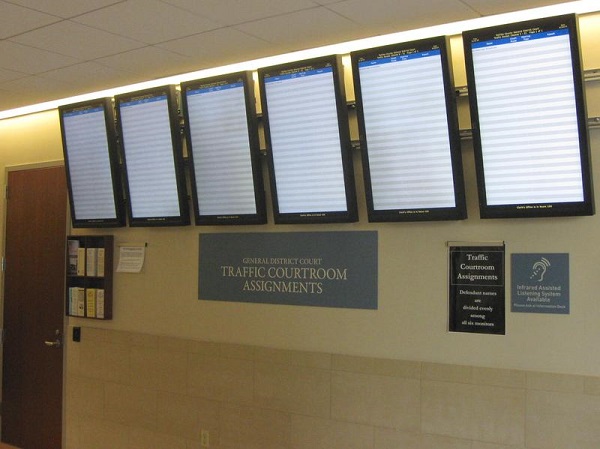Public Information and Wayfinding
Signage
Good signage answers questions before they are asked and promotes good will with the public. It also eliminates the need for people to ask directions or instructions from busy court staff. Hand lettered signs should be avoided except as a very temporary measure.
 |
Fairfax, Virginia Traffic Courtroom Docket Display |
Case Information and Dockets
Daily dockets providing the defendant name, case number, time, and courtroom should be displayed in the main lobby and outside each courtroom. The names of juveniles should not appear on docket listings. Dockets may be typed or printed sheets. New court facilities should utilize automated video docket display systems. These require power and data jacks positioned on the wall usually at a height of about seven to eight feet from the floor and mounting brackets to hold the video panels.
Building Directions and Directory
Prominent directional and informational signs should be used in the courthouse. Signage should complement the interior decor of the facility and be professional and uniform in appearance. Continuity of the signage supplier is important since internal changes are inevitable and using the same type for new signs is desirable. Hand lettered signs should be avoided except as a very temporary measure.
A building directory and schematic diagram listing all offices in the building should be located near each major public entrance and on each floor of the courthouse. at the main public entrance. Other important signs include office names, room numbers, officials’ names and titles, identifying signs, restricted access warnings, directional signs with arrows, signs designating special handicapped services, quiet zones, and brief procedural guides (i.e. “order and pay for photocopies here”).
Information Desk or Kiosk
Large, busy courthouses may have a staffed information desk. If so, it should be located in a highly visible area near the main entrance just inside the security perimeter and be clearly identified. Interactive touch screen displays located in the lobby or elsewhere in the building can also be used to provide directional as well as other building or case information.